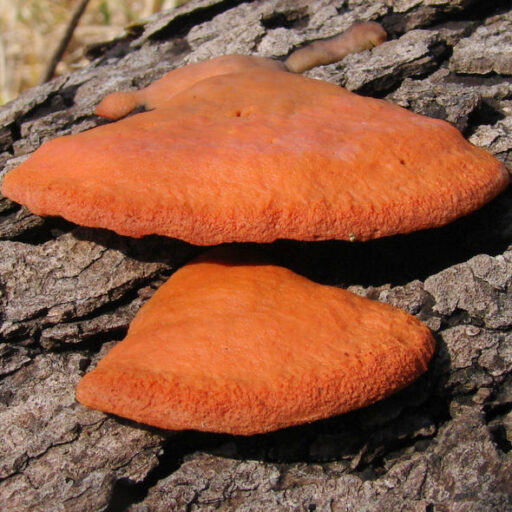Pholiota fungi are a cosmopolitan wood rotting fungus
The genus Pholiota encompasses a diverse group of small to medium-sized, fleshy mushrooms belonging to the family Strophariaceae. These mushrooms are predominantly saprobes, meaning they derive their nutrients from decomposing organic matter, particularly dead wood. Pholiota species are characterized by their distinctive scaly caps, a feature that contributes to their common name, “scalycaps.”
Cap: The caps of Pholiota mushrooms exhibit a wide range of shapes and sizes, from convex to bell-shaped or even flat in maturity. Their surfaces are typically adorned with scales, ranging from fine and appressed to thick and prominent. These scales can vary in color from brown and rusty brown to yellow and even red or purple.
Gills: Typically attached to the stem, either closely spaced or distant. Initially, they appear whitish or cream-colored, gradually transitioning to various shades of brown or rusty brown as the mushroom matures.
Stem: Varies in length and thickness, ranging from thin and slender to stout and robust. They can be smooth or covered with scales, and their color may range from white or cream to brown or even purplish.
Veil: The partial veil, a remnant of the membrane that protects the developing gills, is often present in Pholiota mushrooms. It may leave behind remnants on the cap margin or stem, thus contributing to the mushroom’s overall appearance.
Spore Print: The spore print, a valuable tool for mushroom identification, reveals a rusty brown color, characteristic of Pholiota fungi.
Habitat: Commonly found in woodlands and forests, where they inhabit decaying wood, stumps, and logs of hardwoods.
Distribution: Globally, with species found in various regions across North America, Europe, Asia, and Australia.



